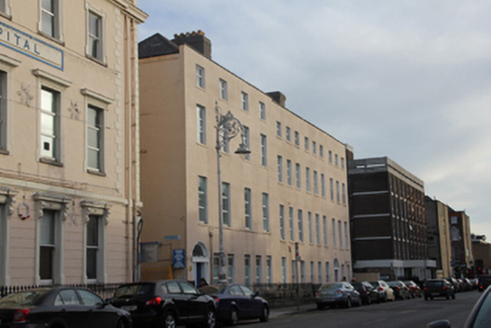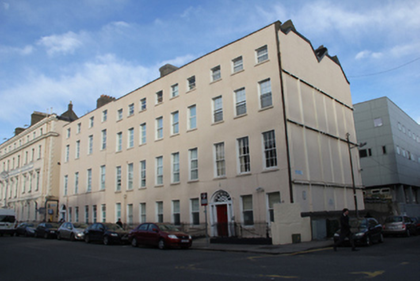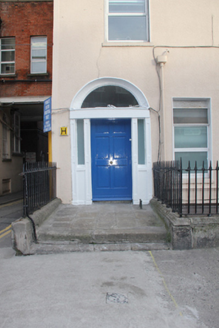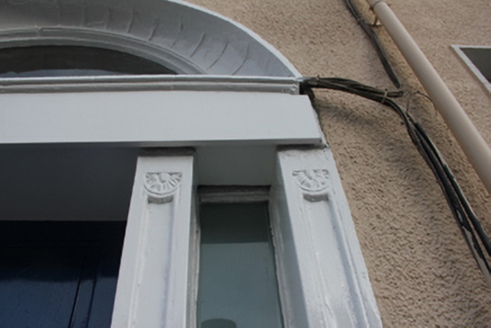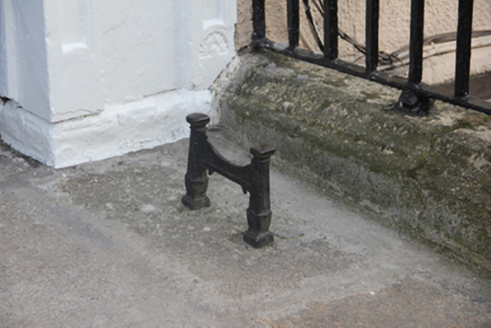Survey Data
Reg No
50011196
Rating
Regional
Categories of Special Interest
Architectural, Artistic
Previous Name
The Children's Hospital originally Saint Joseph's Hospital
Original Use
House
In Use As
Hospital/infirmary
Date
1770 - 1790
Coordinates
315778, 235433
Date Recorded
14/12/2011
Date Updated
--/--/--
Description
Corner-sited former pair of four-storey houses over exposed basements, built c.1780, having three-bay ground floors and two-bay upper floors. Now part of children's hospital. M-profile natural slate shared roof, with shared rendered chimneystacks and clay pots, hidden behind rendered wall having granite coping. Roughcast rendered walling to front with smooth render surround to painted masonry plinth course over ruled-and-lined rendered basement, smooth rendered walls to side and rear elevations. Remnants of slate-hanging to south end of rear. Square-headed window openings having painted masonry sills, patent rendered reveals and having replacement uPVC windows. Three-centre-arched door opening to northernmost house, having rendered reveal and painted masonry doorcase, with replacement timber panelled door flanked by engaged masonry pilasters, opaque glazed sidelights and engaged responding pilasters supporting timber-encased lintel and plain fanlight with moulded masonry archivolt. Door opens onto granite platform with wrought-iron bootscraper and two granite steps bridging basement. Cast-iron railings atop moulded granite plinths to front boundary.
Appraisal
This pair of Georgian houses lines the east side of Temple Street, the thoroughfare being laid out in 1773 by Luke Gardiner II. The houses are now part of Temple Street Children's University Hospital. Significant alterations include the removal of the doorcase and entrance paving to the southern house, and replacement of the windows, but despite this, much of the original character has been retained. The retention of the doorcase and the iron railings and stone plinths to the front boundary provide a strong impression of intactness in the streetscape and the whole provides a suitably neo-Classical context for the adjacent Saint George's Church, the original setting for which has been otherwise much impaired.
